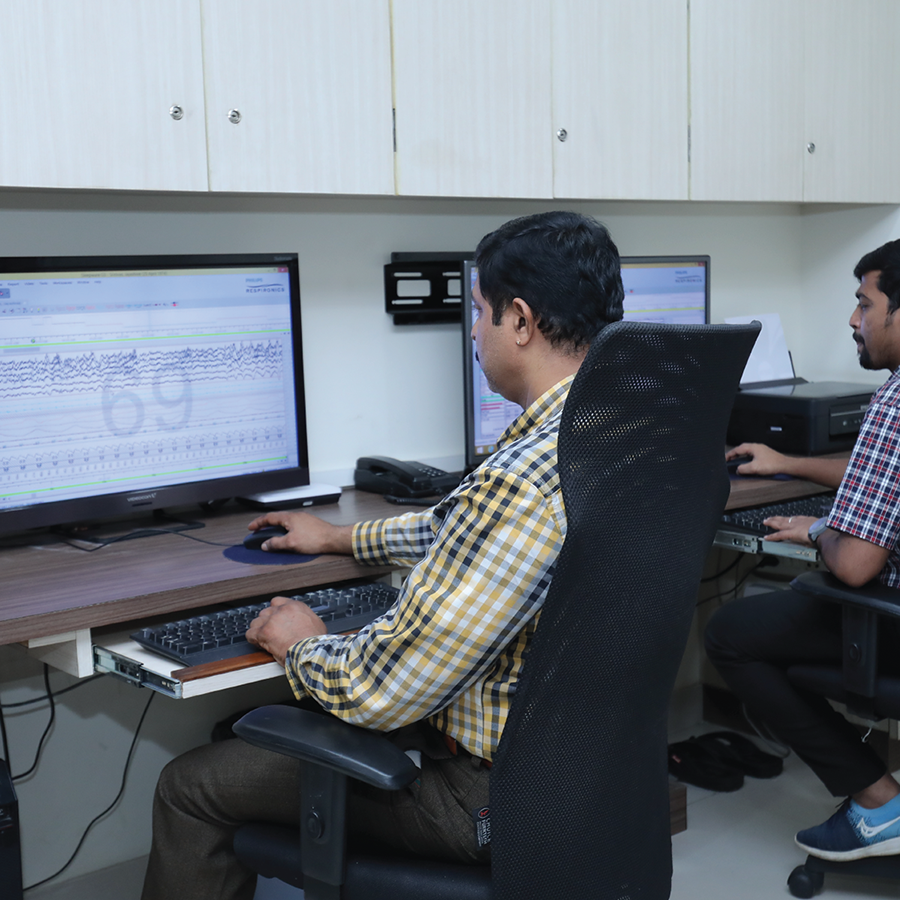Why many people Choose Sleep Study Bangalore for Better Sleep Health
Exploring the Benefits of Rest Studies: A Guide to Improved Rest Quality
Sleep researches use an essential home window right into the intricacies of rest patterns and conditions. They play a considerable function in diagnosing problems like sleep apnea and sleeplessness. By examining different physical criteria, these analyses lead the way for tailored therapy plans. The implications of enhanced rest extend beyond rest, influencing cognitive feature and psychological health. The trip does not end with a diagnosis-- comprehending the next actions is similarly crucial.

Comprehending Sleep Disorders and Their Effect
Lots of people might underestimate the importance of rest, rest disorders can greatly affect overall health and well-being. These conditions, which consist of problems such as sleeping disorders, sleep apnea, and uneasy leg disorder, can lead to a range of unfavorable end results. Persistent rest deprival can hinder cognitive feature, hinder memory retention, and enhance the threat of psychological wellness problems such as anxiety and anxiety. On top of that, individuals struggling with rest problems frequently experience physical health difficulties, including heart disease, weight problems, and diabetes. The effect of inadequate sleep prolongs beyond the individual, affecting relationships and office efficiency. Acknowledging the severity of sleep conditions is crucial, as they can interfere with not just individual wellness but also societal functioning. Understanding these problems can cause far better understanding and therapy options, ultimately promoting improved rest quality and total health and wellness.
The Process of Undertaking a Sleep Study
Going through a sleep research includes a methodical examination of an individual's rest patterns and behaviors to detect possible sleep problems. The procedure normally starts with a consultation, where a health care specialist gathers outlined information relating to the patient's sleep routines, case history, and any kind of signs experienced. This first evaluation helps determine the need of a sleep research study.
As soon as deemed needed, the patient routines an over night remain at a rest laboratory or sets up devices in the house. During the research, different physical parameters are checked, including mind activity, heart price, and breathing patterns. Service technicians may utilize cams and sensing units to observe the individual's motions and overall sleep quality.
After the research, the accumulated information is examined, enabling experts to recognize any kind of rest disorders present. The outcomes educate customized therapy plans focused on boosting the patient's sleep high quality, inevitably boosting their overall health and wellness and health.
Kinds Of Sleep Studies and What They Measure
Rest researches can be classified into a number of kinds, each made to measure particular facets of rest and detect various rest disorders. One of the most usual type is polysomnography (PSG), which tapes brain waves, oxygen levels, heart rate, and breathing feature throughout the evening. This extensive research is important for identifying problems like sleep apnea, narcolepsy, and uneasy legs disorder.
Another kind is home rest apnea testing (HSAT), which is less intrusive and generally performed in the individual's home - Sleep Study Bangalore. It mainly concentrates on diagnosing obstructive rest apnea by determining air flow, snoring, and blood oxygen levels
Actigraphy, a third kind, entails putting on a wrist device that tracks rest patterns with time, supplying insights right into sleep duration and read top quality. Furthermore, multiple rest latency tests (MSLT) measure daytime drowsiness and are vital in detecting narcolepsy. Each research study type plays a significant duty in understanding and boosting rest health and wellness.

Translating Rest Study Results
After a rest research study is carried out, the analysis of results becomes fundamental in detecting sleep problems and guiding therapy alternatives. Health care experts examine various data collected during the study, including rest stages, period, and any type of disruptions in breathing patterns. Secret parameters, such as the Apnea-Hypopnea Index (AHI) and oxygen saturation levels, provide understandings right into conditions like sleep apnea or sleeplessness.
The medical professional reviews the regularity and severity of disturbances, which can show the visibility of specific conditions. Sleep architecture, reflecting the balance of rapid eye movement and non-REM sleep, is likewise assessed to identify total sleep top quality. Accurate analysis calls for taking into consideration the client's medical background, symptoms, and way of life variables. Eventually, these outcomes not just inform the diagnosis yet also shape customized therapy strategies, guaranteeing that individuals obtain targeted treatments to enhance More Help their rest quality and overall health.
Steps to Enhance Sleep Quality After a Study
Once a sleep research has been completed, individuals typically seek efficient methods to improve their sleep high quality based on the findings. First, developing a regular rest timetable can assist control the body's body clock, making it much easier to drop asleep and get up rejuvenated. Producing a relaxing bedtime routine, including tasks such as analysis or meditation, can indicate the body that it is time to unwind.
Furthermore, enhancing the sleep atmosphere is important; this includes maintaining a comfortable room temperature, reducing noise, and making sure darkness (Sleep Study Bangalore). Limiting screen time prior to bed is likewise necessary, as blue light can conflict with melatonin manufacturing. Additionally, individuals need to bear in mind their diet regimen, staying clear of square meals, high levels of caffeine, and alcohol near going to bed. Integrating routine physical activity during the day can promote deeper rest at evening. By executing these methods, people can greatly boost their general sleep high quality

Regularly Asked Inquiries
The length of time Does It Require To Arrange a Sleep Research?
Scheduling a sleep study generally takes one to 4 weeks, depending upon the clinic's schedule and the client's particular needs. Aspects such as insurance policy authorizations and clinical assessments may additionally influence the timeline.
Are Sleep Studies Covered by Insurance Policy?
Sleep researches are typically covered by insurance, however insurance coverage varies relying on the company and details plan. It is crucial for individuals to confirm their insurance coverage information to understand their monetary duties before organizing.
What Should I Bring to My Sleep Research?
Participants should bring comfy sleepwear, any needed medications, personal health items, and a preferred pillow or covering. Furthermore, they may consider bringing a checklist of concerns for the rest service technician concerning the research process.
Can Kid Undergo Rest Studies?
Yes, youngsters can go through sleep researches. These studies are developed to examine rest disorders in pediatric clients, assisting medical care professionals establish proper therapy plans to enhance their general rest top quality and well-being.
Exists Any Type Of Preparation Needed Prior To a Sleep Research study?
Prior to a rest study, individuals must stay clear of caffeine, alcohol, and certain medicines. They might also be recommended to maintain a routine rest timetable and bring comfortable clothes, essential items, and any type of essential clinical records for the evaluation.
Rest researches supply an important home news window right into the complexities of rest patterns and conditions. Going through a sleep study entails a systematic assessment of an individual's rest patterns and behaviors to diagnose possible rest conditions. Sleep researches can be classified into several kinds, each developed to measure details elements of sleep and detect various rest disorders. After a rest research study is conducted, the analysis of results becomes basic in identifying rest conditions and guiding therapy options. Rest design, reflecting the equilibrium of REM and non-REM sleep, is likewise evaluated to identify overall rest high quality.